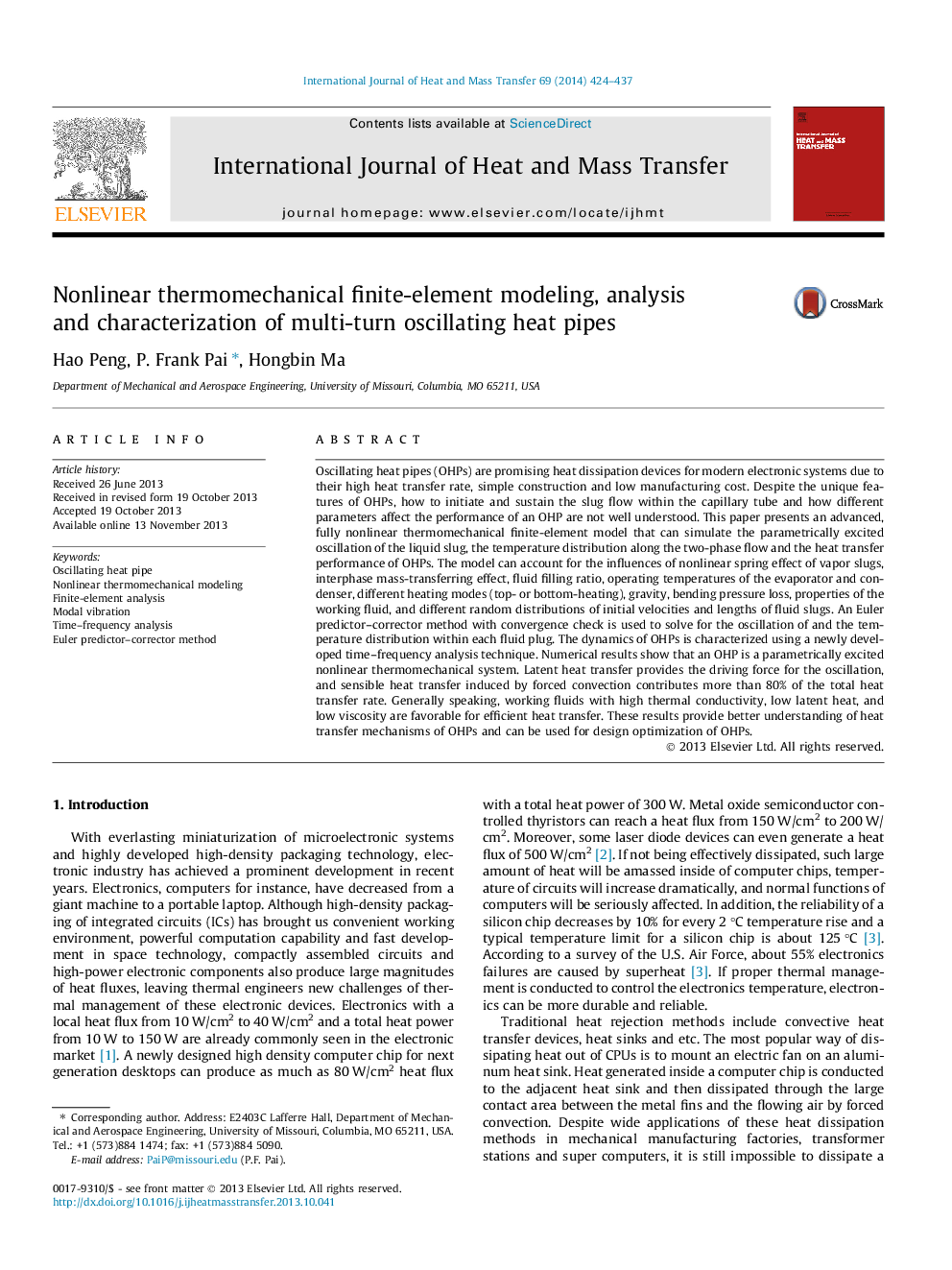| کد مقاله | کد نشریه | سال انتشار | مقاله انگلیسی | نسخه تمام متن |
|---|---|---|---|---|
| 658126 | 1458073 | 2014 | 14 صفحه PDF | دانلود رایگان |
Oscillating heat pipes (OHPs) are promising heat dissipation devices for modern electronic systems due to their high heat transfer rate, simple construction and low manufacturing cost. Despite the unique features of OHPs, how to initiate and sustain the slug flow within the capillary tube and how different parameters affect the performance of an OHP are not well understood. This paper presents an advanced, fully nonlinear thermomechanical finite-element model that can simulate the parametrically excited oscillation of the liquid slug, the temperature distribution along the two-phase flow and the heat transfer performance of OHPs. The model can account for the influences of nonlinear spring effect of vapor slugs, interphase mass-transferring effect, fluid filling ratio, operating temperatures of the evaporator and condenser, different heating modes (top- or bottom-heating), gravity, bending pressure loss, properties of the working fluid, and different random distributions of initial velocities and lengths of fluid slugs. An Euler predictor–corrector method with convergence check is used to solve for the oscillation of and the temperature distribution within each fluid plug. The dynamics of OHPs is characterized using a newly developed time–frequency analysis technique. Numerical results show that an OHP is a parametrically excited nonlinear thermomechanical system. Latent heat transfer provides the driving force for the oscillation, and sensible heat transfer induced by forced convection contributes more than 80% of the total heat transfer rate. Generally speaking, working fluids with high thermal conductivity, low latent heat, and low viscosity are favorable for efficient heat transfer. These results provide better understanding of heat transfer mechanisms of OHPs and can be used for design optimization of OHPs.
Journal: International Journal of Heat and Mass Transfer - Volume 69, February 2014, Pages 424–437
